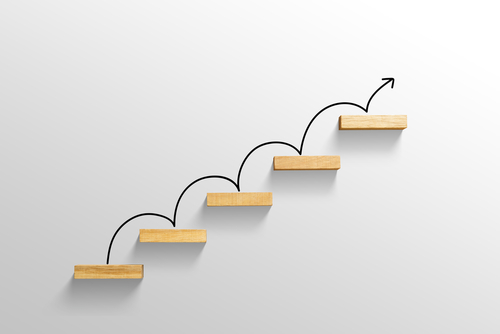
The business world is more competitive today than ever before. 90% of modern business leaders say their industry is tougher today than it was three years ago and 57% now employ teams of competitive intelligence employees to keep up with rivals.
As a B2B professional, you can help your firm stand out from the crowd by creating a culture of continuous improvement. A culture of continuous improvement ensures you discover competitive advantages earlier than other firms and helps you run a more agile, flexible company.
You can bolster your efforts to create a culture of continuous improvement by investing in AI. This is key, as the modern business landscape is dominated by data and algorithmically generated insights.
AI in B2B
Artificial intelligence programs like ChatGPT and Midjourney have grabbed headlines for their impressive content creation capabilities. However, if you’ve been in the B2B world for a long time, you’ll know there are hundreds of AI-powered programs and apps to choose from. This is largely due to the explosion of machine learning, which has revolutionized the way that computers “think.”
At their core, machine learning algorithms represent a branch of AI that mimics human thinking. The most powerful, well-trained ML programs are capable of logical reasoning and use machine vision to break down huge data inputs. This means that modern ML programs are capable of incredible feats like real-time facial recognition and cancer detection.
As a B2B business leader, you can use ML programs to enhance your operations and embrace a culture of continuous improvement. Using ML programs to analyze data sets and recognize patterns can benefit your business by improving idea generation and expanding the opportunities that your current model provides. For example, if you’ve collected B2B data for the past five years, handing it over to a relevant ML program will yield results that reveal patterns that your human analyst will have missed.
This can be revolutionary if you’re used to responding to changes in the market instead of predicting them.
Planning for Change
Proactively planning for change is a key component of continuous improvement culture. You can’t afford to be stuck on the back foot and should have measures in place to predict and implement strategic changes. AI can help you plan for changes by improving your understanding of the market and empowering your teams to work together on changes.
Once you’ve identified areas for improvement, you can use AI-driven project management tools to improve internal communication and collaboration. The right tech tools can make a world of difference to teams that are attempting to pivot toward more efficient, effective practices. AI project management tools can enhance these efforts by handling monotonous, repetitive tasks.
AI-integrated project management tools free up time for employees to collaborate across cultural barriers, too. This is crucial as increasingly diverse marketing and sales teams need to treat one another with respect and understanding if you want to truly unleash the potential of a continuous improvement culture. Even subtle changes, like using AI to track competitor data, lighten employees’ workloads and make it easier for folks to work collaboratively with an ethos of respect and an appreciation for change.
Improving Communications
Effective communication is crucial when you’re implementing a culture of continuous improvement. Staff who do not understand why you’re making changes may resent the shift in culture and could inadvertently undermine your operational changes.
Get everyone on board by utilizing strategic planning communication techniques to win folks over. If possible, announce your changes a few months in advance and clearly explain why you’re making the shift. This gives people time to work through their emotional responses and start thinking rationally. It also gives you time to solicit feedback and answer any questions that your team might have.
Create clear frameworks for folks to work with when implementing a strategic change. Employees tend to resent changes that make their day-to-day work life more difficult and need clear instruction. Get started by establishing relevant objectives and key results (OKRs). This gives employees a sense of responsibility which is key when implementing strategic changes.
Remember to celebrate the successes of your team along the way. For example, if you implement a new ML program to track market sentiment, highlight the efforts of employees who have used that data to create more relevant marketing materials for customers. This will reinforce the fact that a culture of continuous improvement is effective.
If you do decide to implement tech-based changes, be sure to follow up with training initiatives. Many sales and marketing professionals are intimidated by the idea of AI and have not received formal training to help them navigate relevant programs. Alleviate fears and improve adoption by hosting workforce training programs for the AI era at your workplace.
Creating a culture of continuous improvement at your business can streamline operations and bolster your bottom line. Seek support in the form of AI programs that are designed to mimic human thinking and support staff. This can boost your day-to-day productivity and help staff reach their potential. Just be sure to clearly communicate the changes you plan to make and gather employees’ feedback before rolling out an addition to your tech stack.
Get our newsletter and digital focus reports

Stay current on learning and development trends, best practices, research, new products and technologies, case studies and much more.


